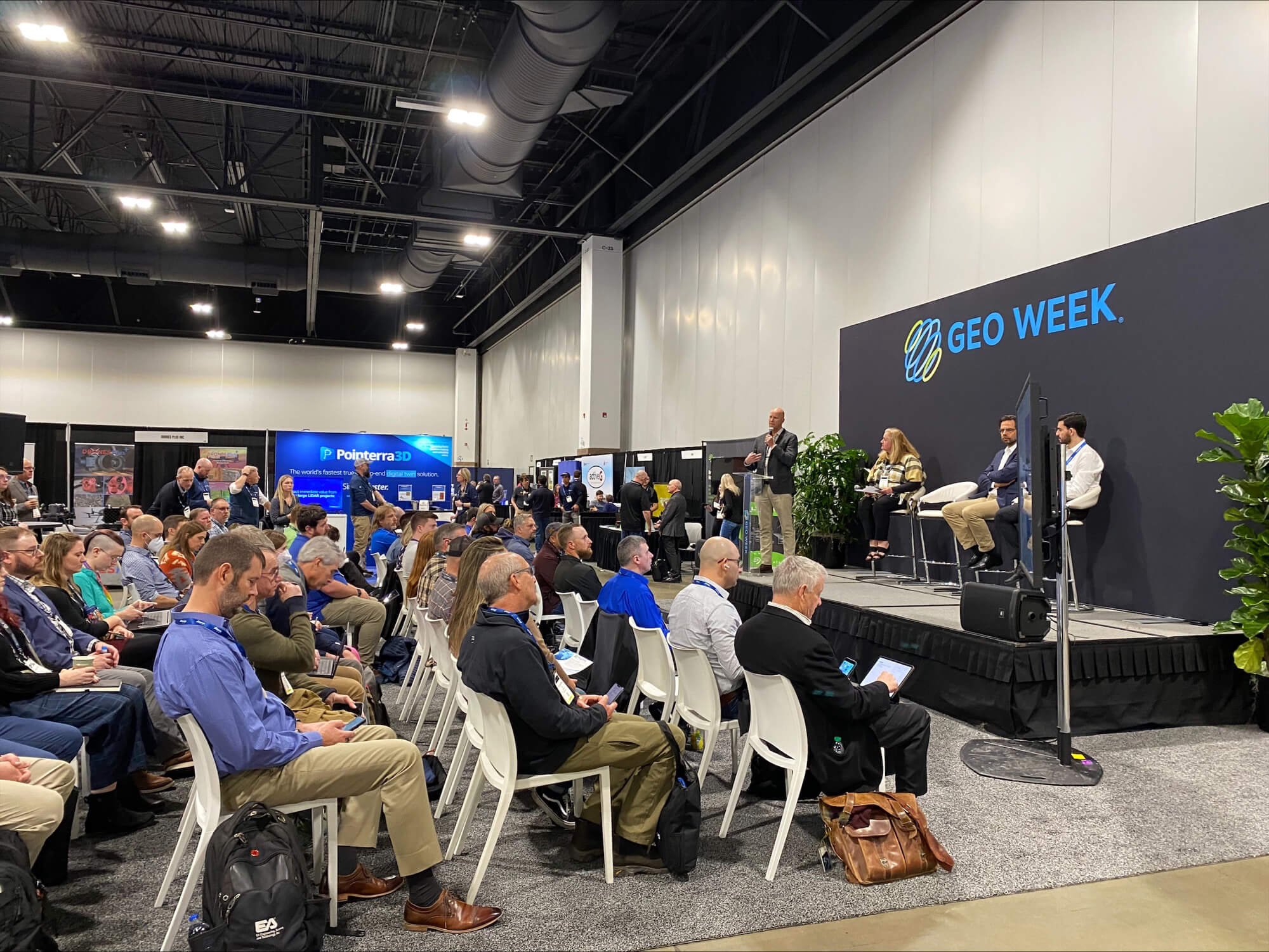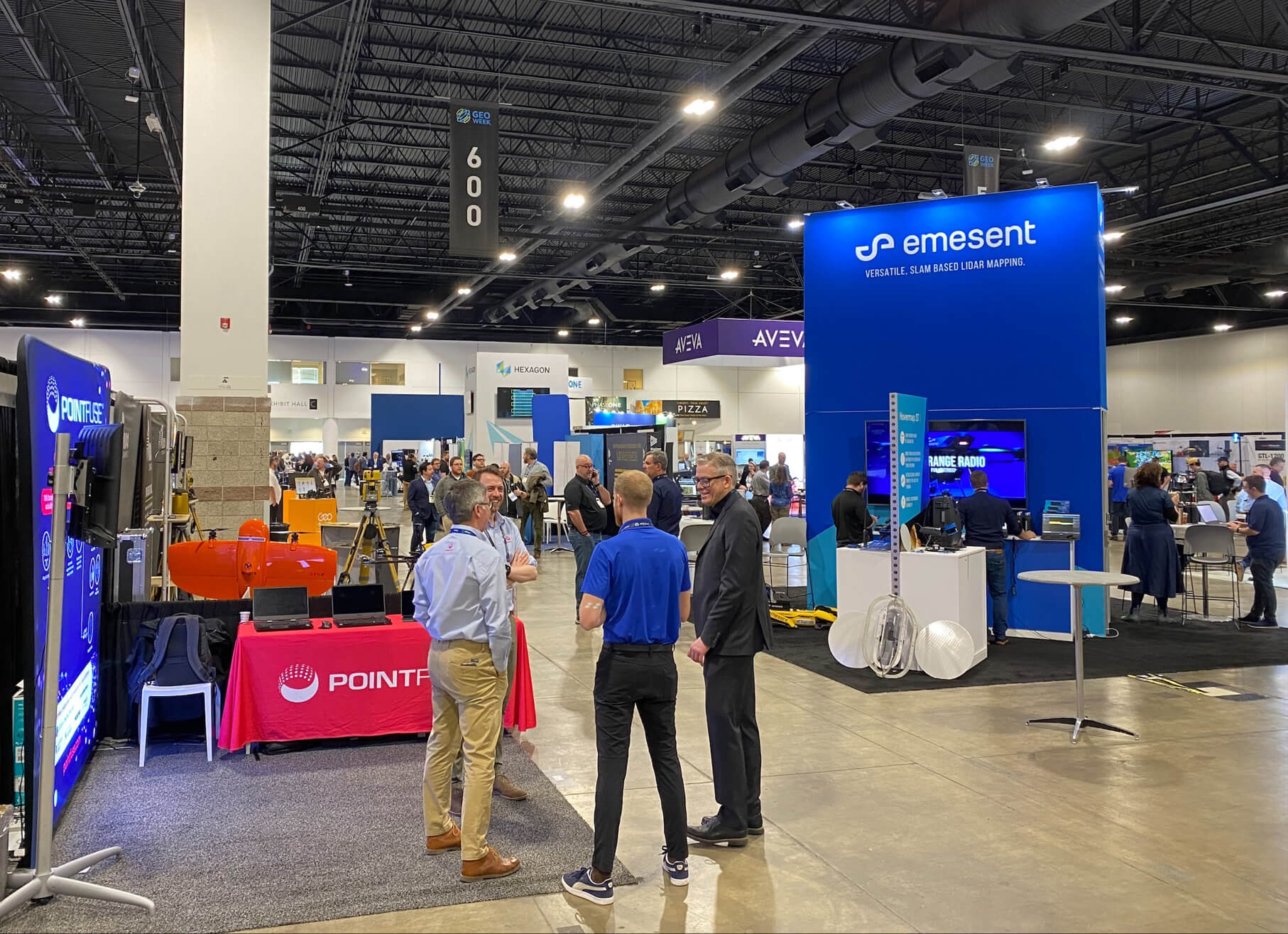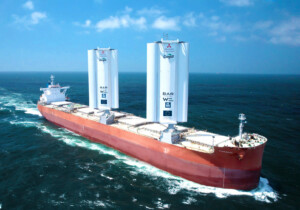Conferences appear to be back to nearly full swing based on attendance numbers and foot traffic at Geo Week 2023, held last February 11–13 at the Colorado Convention Center in downtown Denver.
Billing itself as “the Intersection of Geospatial and the Built World,” Geo Week 2023 saw its attendance rise 44 percent over last year, according to conference organizers. Attendees came from all 50 states and a total of 45 countries. It was a strong second year of growth for Geo Week, which incorporated former stand-alone conferences including the AEC Next Technology Expo & Conference, International Lidar Mapping Forum, and the SPAR 3D Expo & Conference for the first time in 2022.
Bringing these diverse groups and disciplines together likely gave a boost to the overall conference presence and the conference programming reflected that broader diversity of disciplines and industries. It seems show organizers tried to include something for everyone among the more than 50 offered sessions with nearly 200 presenters participating.
“The digital transformation of our world—from the interiors of historical buildings to entire cities, landscapes and the entire planet—is a growing and urgent need,” according to the conference pitch.
A similar broad outlook on the readiness of the AEC industry to adopt digitization set the stage for Monday’s keynote panel, which formally kicked the conference off on Monday. The first of the conference’s two keynote presentations (Jack Dangermond, founder and president presented on day two) included Johnny Fortune, director of the U.S. National BIM Program with the National Institute of Building Sciences and Claire Rutkowski, senior vice president and chief information officer at Bentley, who were joined by private-sector engineering and contractor representatives.
Panel moderator Steve Jones of Dodge Data & Analytics framed the discussion by citing statistics from Dodge’s studies that he says shows the AEC industry—“the biggest capital-intensive industry on the planet”—is lagging compared to other major global industries such as auto manufacturing and aerospace.

Jones added that while more than $700 million in capital has been invested in the development of technology for industry by third parties during the past ten years, gaps still exist. As an example, he said that only 30 percent of trade partners have adopted digital technology, noting the uneven levels of adoption among the various stakeholder groups involved in getting a project built are holding the industry as a whole back.
“Every company in the industry has got to go through all these stages before we as an industry can get to that level,” he said.
Fortune highlighted the owner’s role in driving adoption of technology across the industry’s broader spectrum, noting they are putting up the money, and are often long-term operators that will have the longest tenure of working with project data.
Panelists each offered a range of advice for those companies auditing and assessing their existing technology stacks or implementing digital technology strategies. Of noted importance were open platforms and interoperability that accommodate not only your own organization’s needs but a wide variety of client, partner, and project-specific needs. “Decoupling data from the app” to maximize long-term accessibility and value of the data was a repeated mantra, along with discussion on standards and integration.
All on stage seemed to agree with Rutkowski’s take that when it comes to technology adoption and integration, it’s an organization’s people that can become the most volatile factor. “Any technology project is not a technology project, it’s a change project,” she said.

To get the best return on what are typically very expensive technology investments, she suggested organizations should adopt the “ADKAR” approach throughout their digital journey, and have a plan to communicate during each stage: awareness, desire, knowledge, ability, reinforcement.
It all can get a little overwhelming, admitted the panelists, noting project teams are experiencing “app fatigue,” but the possibilities from broader adoption are creating excitement within the industry.
As the panel ended and attendees dispersed to attend case study or software and product presentations or breakout sessions on AI or reality capture, doors to the sold-out exhibit hall also opened.
High-tech gadgetry and visual eye candy reigned supreme within. Several Boston Dynamics robot dogs were spotted in action at larger exhibitor booths such as Leica, RieglUSA and Esri, with drones and LIDAR equipment filling many others. Monitors displaying digital twin technology, 3D visualization and analysis tools, and point cloud displays were found throughout the rows of 190 exhibitor booths. One hosted live podcasts. Several exhibitors I interviewed spoke positively about their experience at the show, noting it was “not too big and not too small,” had a good energy, and felt it would be worth the investment.
Beyond accommodating vendor booths and displays, the exhibit hall included an open theater stage for presentations, which became acoustically-challenging at times with the level of nearby booth traffic. This year, an academic showcase displaying student projects and an open “pitch the press” event were also added to the exhibit hall.
“It’s cool stuff, it’s awesome,” said one attendee wandering among the steady crowds. Geo Week 2024 is scheduled for Denver next February.
Nancy Kristof is a Denver-based freelance writer who tells stories about the built environment.











